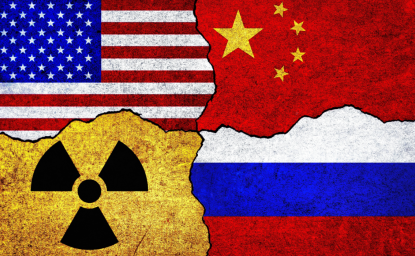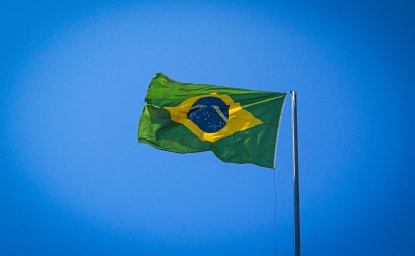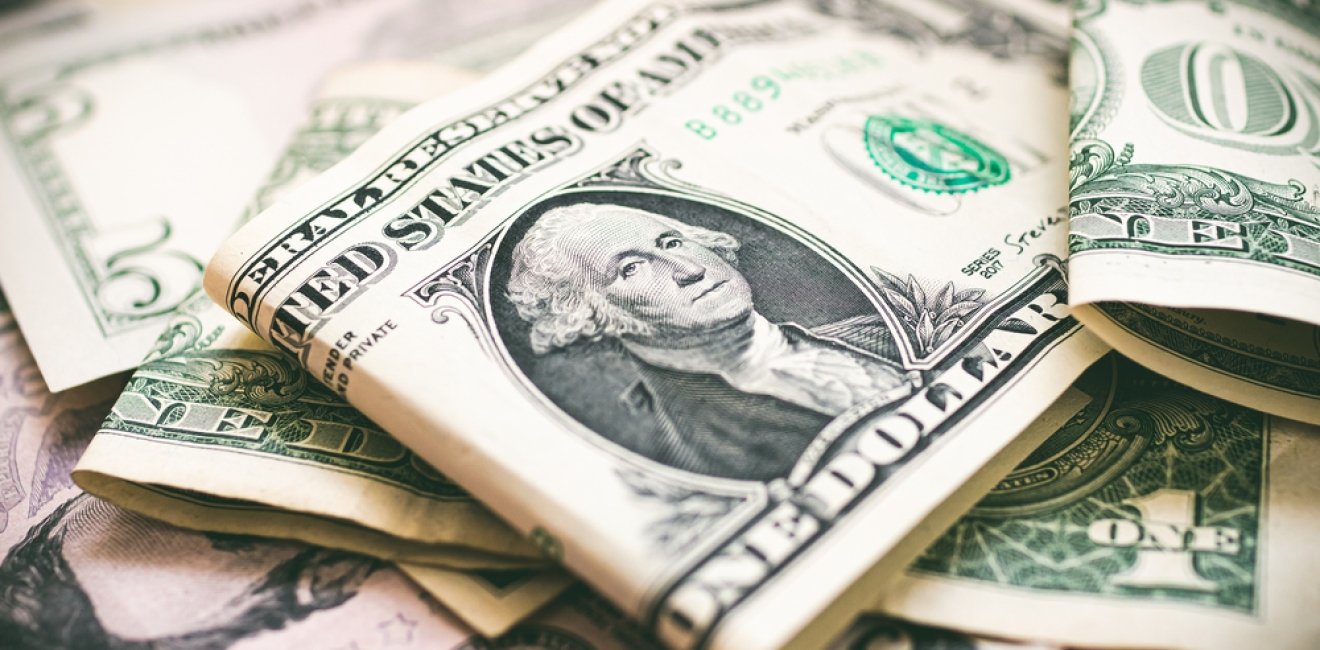Former French President Valery Giscard d’Estaing called it America’s privilège exorbitant. Mr. Giscard, then the French finance minister, was not pontificating on US military might or the nation’s industrial prowess. He was talking about the US dollar and its position as the world’s reserve currency.
Few Americans think about the value of the greenback. But for the citizens of virtually every other country, the dollar’s value on currency exchanges is a big deal. US monetary policy is closing watched around the world because interest rate hikes by the Fed could boost the dollar’s value and make loans denominated in dollars more expensive to repay in local currencies. When the Fed eases monetary policy rates of return decline on US Treasury debt instruments, it unleashes a cacophony from those who seek to invest their current account surpluses.
If this is not a privilege, it is certainly an advantage. But this unique position is under threat on several fronts. Washington would do well to heed the risks. The most direct threat comes from a growing group of emerging countries that resent Washington’s weaponization of the dollar on global markets and payment networks. A second threat arises from technology, as central banks around the world work to develop their own digital currency networks. Another threat stems from the possibility that political grandstanding on Capitol Hill over the budget may undermine efforts to raise the debt ceiling and could subsequently lead the U.S. to default on its loans.
Politicians in other countries often bristle – as Mr. Giscard did – at the dollar’s preeminence.
Leaders in many emerging countries are raising the spectre of putting forward their own currencies to rival the dollar.
In June 2022, at a summit of the leaders from Brazil, Russia, India, China and South Africa, Vladimir Putin said the BRICS countries would develop a new international reserve currency. In March, finance ministers from the 10 Southeast Asian countries comprising ASEAN discussed using local currencies in intraregional trade.
Then, in a speech in Shanghai earlier this month, Brazil’s pugnacious President Luiz Inacio Lula da Silva railed against the dollar’s influence.
“Every night I ask myself why all countries have to base their trade on the dollar. Why can’t we do trade based on our own currencies? Who was it that decided that the dollar was the currency after the disappearance of the gold standard?” he asked.
President Lula might recall that in July 1944, delegates from 44 countries gathered in Bretton Woods, New Hampshire, to shape the post-World War II monetary order. Nearly half of those delegates (19) were from Latin America, including Brazil, whose delegation was chaired by Arthur de Souza Costa. He said of the conference, “Bretton Woods offers a way for guidance of human destinies through the development of human brotherhood.”
Notably, the International Monetary Fund and the World Bank were created at the conference. Delegations agreed that the US dollar would be convertible to gold and that exchange rates would be fixed. The IMF would oversee this system of fixed exchange rates. This status quo prevailed until the summer of 1971, when persistent demands from other countries for the US to convert foreign-held dollars into gold led President Richard Nixon to halt the arrangement. By 1973, a system of floating exchange rates had emerged. Yet the dollar’s preeminence remains.
According to the Bank for International Settlements – known as the central bank for central banks – almost 90% of foreign exchange transactions involve the dollar.
It makes up just under 60% of foreign exchange reserves held by central banks around the world. Roughly half of global trade invoices and international loans are in dollars.
Of the more than 42 million international payment instructions sent each day over the 11,000 member Society for Worldwide Interbank Financial Telecommunication (SWIFT) network, 40% involve payments in dollars.
Trade in most commodities, including oil, natural gas, wheat, corn, soybeans, gold, silver and tin, is priced in dollars. So are sales of aircraft. High demand for the greenback means the currency is often overvalued, rewarding US consumers but often penalizing US exporters. But the power of the dollar means that when the US runs a trade deficit – as it has nearly every year since the early 1970s – no balance of payment crisis will ensue. The Treasury need only issue more money through the sale of Treasury bills and bonds. Such a course of action may be questionable for a variety of reasons, but creditors of the US know they will be paid in dollars, the world’s reserve currency.
While investors have confidence in many other currencies – the euro, the yen, pound sterling, the Swiss franc among them – none can match the dollar. Moreover, all these currencies are issued by allies of the US and are unlikely to be the target of US-led sanctions.
But the weaponization of the dollar has been a wakeup call for many emerging countries and calls for “de-dollarization” have grown louder in recent years.
In 2012, concerns about the development of Iran’s nuclear program led the European Union to expel Tehran from SWIFT. After its 2022 invasion of Ukraine, Russia was as well. Other countries, including China, worry they may be sanctioned next. These fears inspired Moscow and Beijing to develop parallel systems to SWIFT. Russia created the System for Transfer of Financial Messages (SPFS) and China established the Cross-Border Interbank Payment System (CIPS).
Trade traditionally conducted in dollars now takes place in other currencies. Russia prices its oil in Chinese renminbi or Indian rupees. Beijing is pressing other oil exporters, including Saudi Arabia and the United Arab Emirates, to price their oil in renminbi as well.
An analysis by the Financial Times indicates that the renminbi’s share of trade finance has grown from less than 2% in February 2022 to 4.5% today.
These de-dollarization efforts bear watching. Too much monetary muscle flexing by Washington on global markets or networks like SWIFT will further fuel foreign resentment and drive new attempts to sidestep the dollar. But to replace the dollar means finding an alternative that is acceptable to global traders and investors. The attractiveness of the renminbi and the ruble as stores of value is severely limited by Russia’s past appropriation of Western assets and its current pariah status, as well as China’s rigid capital controls and opaque market practices. Moreover, the dollar is the currency of choice for more than 84% of trade finance.
But de-dollarization by resentful countries is not the only the threat to the dollar-driven global economy. There is also the spread of central bank digital currencies networks (CBDCs). While CBDC payment and exchange networks are in the early stages of definition and development, that won’t be the case for long. According to the Atlantic Council’s Digital Currency Tracker, 35 countries were considering CBDCs in May 2020. By December 2022, that number had grown to 114, with 11 countries having already launched a digital currency. China’s pilot project reaches 260 million people. This year, more than 20 countries will move toward developing their own pilots.
These networks are likely to be fragmented, according to the BIS, and will create a host of new regulatory challenges. But the Basel-based regulator notes, “CBDC will be a game changer in the international financial system, and in all likelihood will trigger greater currency competition.”
It’s too early to determine how the rise of CBDC networks will affect trade and payment systems around the world. But the Federal Reserve is certainly aware that the rules of the game are changing and it is actively developing a US response.
However, the most immediate and unnecessary threat would stem from the self-inflicted wound of a government default on its debts. Once again, brinksmanship over the budget has led some GOP lawmakers to suggest that without deep spending cuts to Biden administration programs, they will not agree to raise the debt limit, currently pegged at $31 trillion. According to the Treasury Department, failure to lift the borrowing limit would result in the Federal government running out of funds sometime this summer.
The merits of Biden’s programs aside, the mere suggestion that some members of Congress are prepared to make a political point by allowing the nation to default is the kind of thing that rattles investors and shakes global confidence in the US. Most observers believe that default would be such a catastrophic outcome that even hardline Republicans would, in the end, not allow it to happen.
Whether it is a privilege or an advantage, there is no denying the US has benefitted handsomely from the dollar’s central role in the global economy. Preserving this system is very much in the nation’s interest and actions that might squander this privileged position would be reckless in the extreme.
Author

Director of the Information and External Relations Division and Chief Spokesman at the World Trade Organization (retired)

Wahba Institute for Strategic Competition
The Wahba Institute for Strategic Competition works to shape conversations and inspire meaningful action to strengthen technology, trade, infrastructure, and energy as part of American economic and global leadership that benefits the nation and the world. Read more

Explore More
Browse Insights & Analysis
Responding to Challenges to US Economic and Global Leadership

US Inaction Is Ceding the Global Nuclear Market to China and Russia




